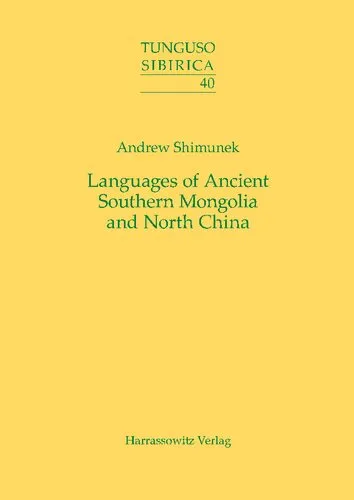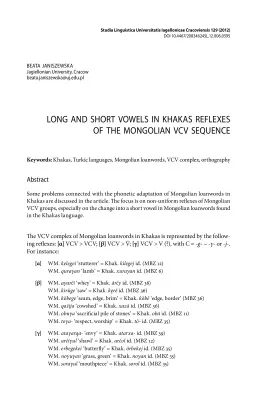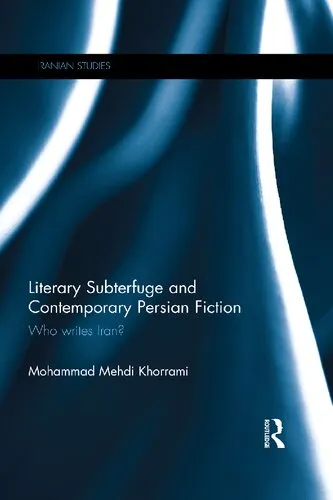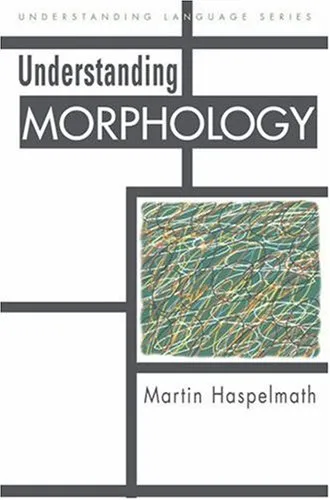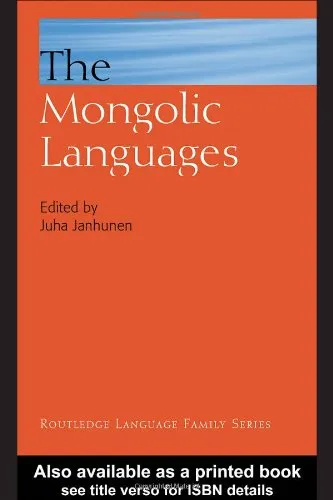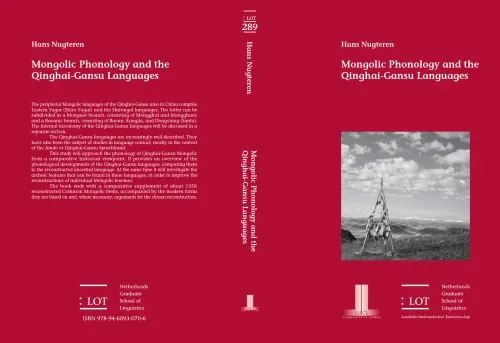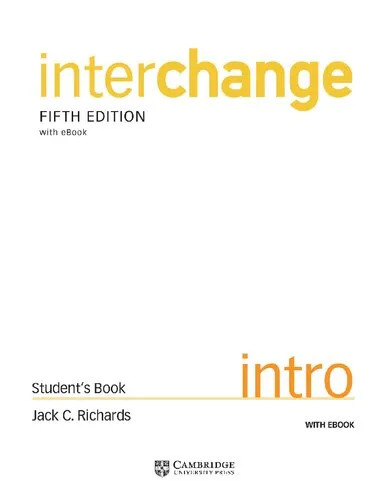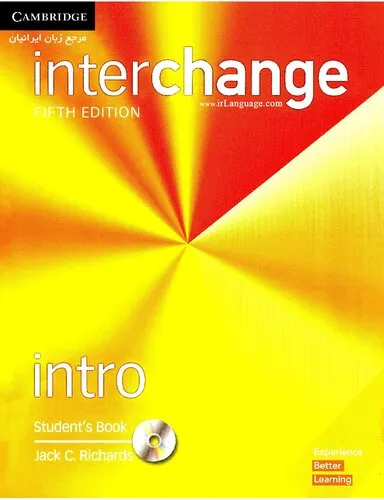Languages of Ancient Southern Mongolia and North China: A Historical-Comparative Study of the Serbi or Xianbei Branch of the Serbi-Mongolic Language Family
4.5
Reviews from our users

You Can Ask your questions from this book's AI after Login
Each download or ask from book AI costs 2 points. To earn more free points, please visit the Points Guide Page and complete some valuable actions.Related Refrences:
Introduction to "Languages of Ancient Southern Mongolia and North China: A Historical-Comparative Study of the Serbi or Xianbei Branch of the Serbi-Mongolic Language Family"
The study of ancient languages offers profound insights into the cultural and historical developments of civilizations, as well as the intricate connections that bind linguistic families across vast territories. In my book, "Languages of Ancient Southern Mongolia and North China: A Historical-Comparative Study of the Serbi or Xianbei Branch of the Serbi-Mongolic Language Family", I explore the linguistic and historical legacy of the Serbi, or Xianbei, peoples—an influential nomadic group that once thrived in the regions we now call Southern Mongolia and North China. This book represents a meticulous investigation into an often-overlooked branch of the Serbi-Mongolic language family, shedding light on the linguistic evolution, ethnohistorical context, and sociocultural contributions of the Serbi-speaking peoples.
The Serbi (Xianbei) branch has long posed a challenge to linguists and historians due to the incomplete historical accounts, the fragmentary nature of their written legacy, and their interactions with numerous other linguistic and ethnic groups. Through this historical-comparative study, I analyze linguistic data, historical records, and archaeological evidence to reconstruct the linguistic characteristics of the Serbi peoples and their place within the Serbi-Mongolic family. By uniting the disciplines of linguistics and history, this book offers a comprehensive understanding of ancient Southern Mongolia and Northern China's linguistic and cultural landscape.
Detailed Summary of the Book
This book is divided into several sections, each addressing a critical aspect of the Serbi (Xianbei) linguistic and historical legacy. The first part provides an overview of the Serbi-Mongolic language family, placing the Serbi branch within its historical and geographical context. By tracing the origins and migrations of the Serbi peoples, I equip readers with the tools necessary to understand the broader significance of the branch in the linguistic evolution of the region.
Subsequent sections delve into the phonological, morphological, and syntactical features of the Serbi language, using comparative methods to establish connections with other related languages. In addition, the book examines historical records from Chinese dynastic sources, inscriptions, and localized texts to reconstruct the sociolinguistic conditions under which the Serbi language developed. By integrating archaeological evidence, I address how cultural exchange and political developments influenced linguistic change.
Finally, the book explores the decline of Serbi as an independent linguistic entity and its integration into other languages, including Middle Mongolic and pre-modern Chinese dialects. Throughout the study, I consider how the Serbi branch’s development reflects larger processes of language contact, shift, and convergence in premodern Central and East Asia.
Key Takeaways
- The Serbi branch of the Serbi-Mongolic language family represents a critical link in understanding the linguistic history of premodern East and Central Asia.
- Through comparative linguistic analysis, we can reconstruct features of languages that have left behind only minimal written records.
- The study of Serbi (Xianbei) highlights the importance of migration, cultural diffusion, and political shifts in shaping linguistic evolution.
- Understanding ancient languages like Serbi helps illuminate the broader historical connections among nomadic and sedentary societies in East Asia.
Famous Quotes from the Book
"Languages evolve not in isolation, but through the ceaseless interplay of cultures, migrations, and exchanges across generations."
"The Serbi branch of the Serbi-Mongolic language family serves as a mirror of the shifting dynamics and remarkable adaptability of nomadic societies across ancient Mongolia and China."
Why This Book Matters
This book contributes to a growing body of scholarship that seeks to recover and understand the ancient linguistic heritage of East and Central Asia. By examining the Serbi (Xianbei) language in detail, I aim to fill a significant gap in the documentation and comparative study of ancient languages. The Serbi-speaking peoples shaped historical events in North China and Mongolia during pivotal periods of dynastic change, yet their language has often been overlooked or dismissed due to a lack of direct evidence. This study brings their linguistic and cultural contributions into focus using innovative methodologies.
"Languages of Ancient Southern Mongolia and North China" is an essential resource for linguists, historians, and archaeologists interested in the ethnohistorical and linguistic complexities of premodern Asia. Moreover, it provides a framework for interdisciplinary research that bridges linguistic reconstruction and historical analysis, demonstrating how language is both a product and a driver of human history. The book underscores the diverse pathways through which cultures and languages interact, influence one another, and ultimately transform over time.
Free Direct Download
You Can Download this book after Login
Accessing books through legal platforms and public libraries not only supports the rights of authors and publishers but also contributes to the sustainability of reading culture. Before downloading, please take a moment to consider these options.
Find this book on other platforms:
WorldCat helps you find books in libraries worldwide.
See ratings, reviews, and discussions on Goodreads.
Find and buy rare or used books on AbeBooks.
1321
بازدید4.5
امتیاز0
نظر98%
رضایتReviews:
4.5
Based on 0 users review
Questions & Answers
Ask questions about this book or help others by answering
No questions yet. Be the first to ask!
